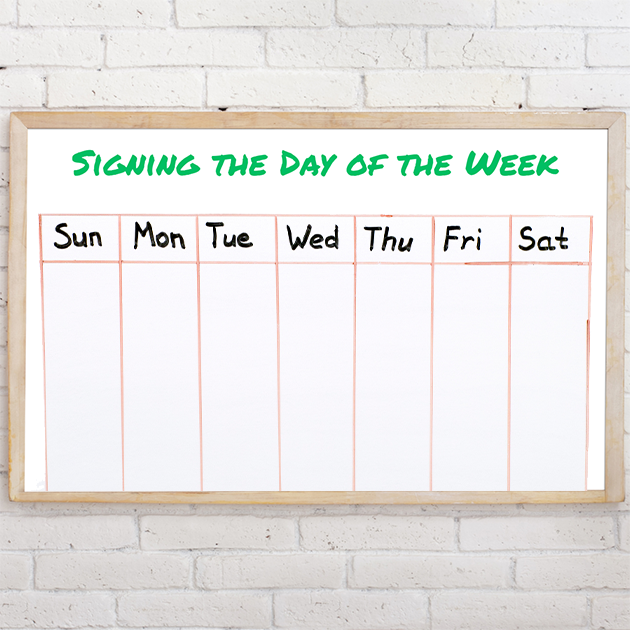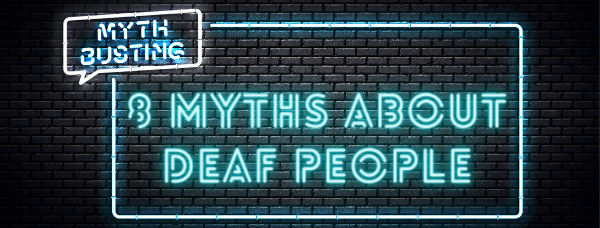
8 Myths About Deaf People
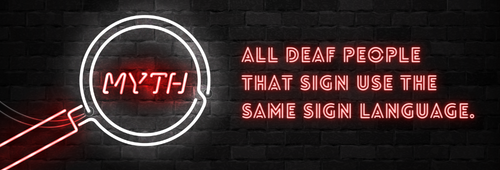
1. Myth: All deaf people that sign use the same sign language.
No, each country or region has their own sign language. Ironically, you would think in England, where they speak English, they would use the same sign language as us. Nope. They use British Sign Language... and Germany uses German Sign Language… and Russia uses Russian Sign Language… etc., etc.
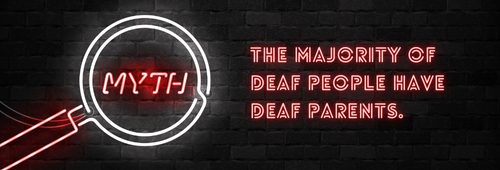
2. Myth: The majority of deaf people have deaf parents.
Although, deafness can be hereditary, statistically, 90% of deaf people are born to hearing parents. Even if two deaf people have a child, there still is only a 1 in 4 chance that the child will be deaf.
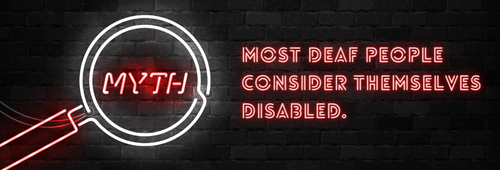
3. Myth: Most deaf people consider themselves disabled.
While hearing individuals may think of deafness as a disability, and some institutions may even classify it as such, most deaf people DO NOT consider themselves disabled. Deaf people can do anything but hear. They speak with their hands and listen with their eyes. Check out our "What is the correct terminology when referring to deaf people?" article for more details.
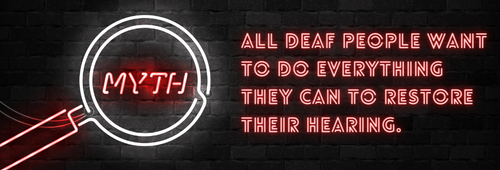
4. Myth: All deaf people want to do everything they can to restore their hearing.
First of all, there is currently no "cure" for deafness. It is true that some deaf individuals use hearing aids or cochlear implants to aid in their hearing. But there are limitations and drawbacks with both approaches. For example, a cochlear implant is an invasive surgery that is permanent and it doesn't always work as desired. What happens if better technology comes along in 20 years? This is just one of the reasons some deaf people are not interested in restoring their hearing.
Further, many deaf individuals feel they are part of a community and Deafness is their identity. Why would they try to change that?
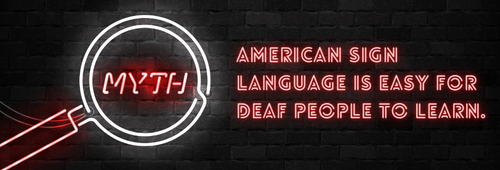
5. Myth: American Sign Language is easy for deaf people to learn.
ASL is not easy to learn, but it is fun! ASL has approximately 10,000 signs, which are used in combination and with fingerspelling. That is a lot to learn and, just like any language, it is not easy to master to the level of fluency! However, as a matter of comparison, the average English dictionary has 250,000 words in it.
ASL is not easier to learn for deaf people than for hearing people. As with any language, the more you use it, the easier it becomes and the better you understand.
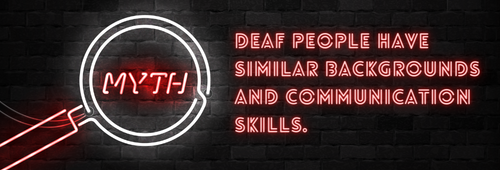
6. Myth: Deaf people have similar backgrounds and communication skills.
Deaf people are like all people: some love school, some hate school; some are gifted, some are learning disabled; some are black, white, Asian; some are rich, some are poor; some come from traditional families, broken families, and foster families. Everyone's backgrounds and situations are different.
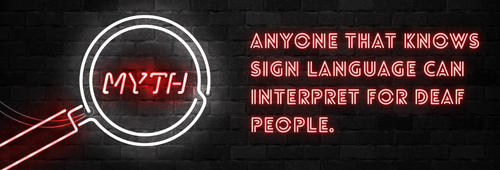
7. Myth: Anyone that knows sign language can interpret for Deaf people.
The difference between an interpreter and a signer, is that a signer may choose the most familiar vocabulary words, the speed of the conversation, and the setting, whereas an interpreter, must facilitate between two languages, without stepping out of their role.
Interpreters:
- Hospital (between a doctor and a deaf patient)
- Courtroom (between a judge and a deaf person)
- Calculus class (between a teacher and deaf student)
- Church (between a preacher and deaf congregant)
Signers:
- Visiting a deaf friend in a hospital
- Going out to dinner
- Playing on the same volleyball team
Signers and interpreters are not all equally skilled. Interpreters need to be highly skilled otherwise they could cause damage.
- Imagine if a signer tried to interpret in a hospital, it could mean life or death.
- Imagine if a signer tried to interpret in a courtroom, it could mean prison.
- Imagine if a signer tried to interpret in a calculus class, it could mean failing.
- Imagine if a signer tried to interpret in church, it could affect their salvation.
This is why most states have rigid guidelines for interpreter certification.
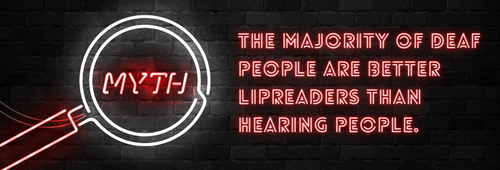
8. Myth: The majority of deaf people are better lipreaders than hearing people.
Hearing people are actually sometimes better lipreaders because they are more familiar with the English language.
Fact: Only 30% of all spoken words are visible on the lips. The letters b, p, m are almost impossible to distinguish, for example, ban, pan, man.
The term lipreading is actually a misnomer. A more accurate term is speechreading. Speechreaders don’t just look at the mouth; they read the entire face, including the eyes, eyebrows, shoulder shrugs, posture, gestures, etc.
ADVERTISEMENTS
 Marta Belsky is Deaf and a third generation ASL user. She has been teaching ASL for over 35 years and enjoys sharing her native language with new users. She has a Bachelor's degree from Gallaudet University and a Masters in Deaf Education from Western Maryland College. She has taught ASL at multiple universities, coordinated interpreter services at a major university, and is a co-owner of Signing Savvy.
Marta Belsky is Deaf and a third generation ASL user. She has been teaching ASL for over 35 years and enjoys sharing her native language with new users. She has a Bachelor's degree from Gallaudet University and a Masters in Deaf Education from Western Maryland College. She has taught ASL at multiple universities, coordinated interpreter services at a major university, and is a co-owner of Signing Savvy. Brenda Cartwright is a Coda, seasoned interpreter, a master teacher, well known presenter, and author of several best selling sign language and interpreting textbooks from the RID Press. For 35 years Brenda was the Chair of the Sign Language Interpreter Program at Lansing Community College in Lansing, Michigan.
Brenda Cartwright is a Coda, seasoned interpreter, a master teacher, well known presenter, and author of several best selling sign language and interpreting textbooks from the RID Press. For 35 years Brenda was the Chair of the Sign Language Interpreter Program at Lansing Community College in Lansing, Michigan. Do deaf people ever wish they were hearing?
Do deaf people ever wish they were hearing?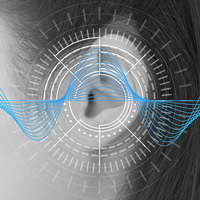 How do people become deaf?
How do people become deaf?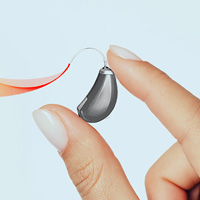 Do all deaf people benefit from hearing aids?
Do all deaf people benefit from hearing aids?


